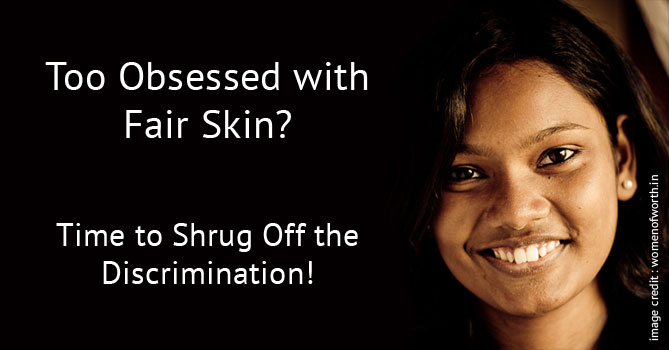Pick up the matrimonial section of any newspaper, and spend ten minutes browsing. While you may not find your “perfect match” there, you will definitely find traces of “colorism”. Here’s what they generally look like-
Wanted a fair, well-educated girl for…
Looking for a suitable bride for a well-educated, fair-complexioned man of…
India is the land of diversity, rich culture – yes. But, it is also the land of irony. For starters, we talk about being proud of our ethnicity, and yet, cannot accept our own subcontinent’s skin colour. Secondly, while many “nationalists” seem keen on doing away with the western influence, they still want a skin tone like people from the United Kingdom or the United States. What is this obsession with a certain set of pigments?
Where did our colour bias come from?
How many times have you seen the white skin is being equated with beauty? Perhaps far too many. Indians have an altogether different set of accomplishments, parents internally feel happy when their child is born with a visibly fair complexion. Comparatively darker skinned children are generally brought up with an undermining sense. Even in schools, there are instances of discrimination based on skin colour- be it something as simple as the instance of a fair-skinned child being given the lead role in the annual drama.
So, where have we inherited this culture of discrimination from? How did white become the “superior” skin colour, especially when it’s present in minor numbers within the country? The most common answer is- colonisation. By a swing of luck, it was the British who invaded India, and gradually established their rule over the nation- they belonged to an ethnicity with white skin. The collective evidence suggests that the English looked down upon the wheat-ish skin colour of Indians.
The colonisation of India was a slow journey that gradually ended after about 200 years. In that duration, it is natural that it wasn’t just the country that got affected, but also our society and its people from the core. The British discrimination against our skin tones slowly got embedded into our own mindset. So, colour discrimnation in India is not traditional, but colonial. Despite independence, we still carry the same bias within us, thinking we are now free.
Discrimination in beauty products
One thing almost every Indian kid has seen growing up is tubes of Fair & Lovely stacked along the dressing table at home. Over the years, more fairness creams have hit the market, and consequently, our dressing tables; but what hasn’t changed, is our obsession. 2009 statistics by the Indian Revenue Service (IRS) show that the youngest users of fairness creams are as young as 12 years! The 12-14 year group constituted for about 13% of the users. If this isn’t an eye-opener, nothing will be.
What kind of upbringing are Indian children being subjected to, that they feel the need to “whiten” their skin tone at any age, much less, so young? The instances of children feeling inferior due to their darker complexion are not rare. Studies show that colour-based discrimination, like any other, may result in the child growing up with low self-esteem, inferiority complex, and so on. Even in the advertisements for fairness products, the darker skinned individual (a girl, usually), being under-confident and timid- until she applies the fairness cream, and then viola! Her problems suddenly vanish, and she transforms into a confident, up-front young woman.
Conclusion
It is scarring to think about how normalised skin-based discrimination has become in today’s time. The fairness creams advertisements, mentioned before, are broadcasted regularly on national television, and barely anybody sees a problem in them. In fact, these beauty products tend to do very well in the market, popular among all age-groups. Even in case of marriages, a person’s skin-tone often becomes a key determinant of how “good” a match they will get.
Beauty, it seems, has become one with pale skins. But we know there’s much more to it than that, there has to be. We might have broken away from the shackles of our invaders 72 years ago, but our bodies are still colonised, it seems.





